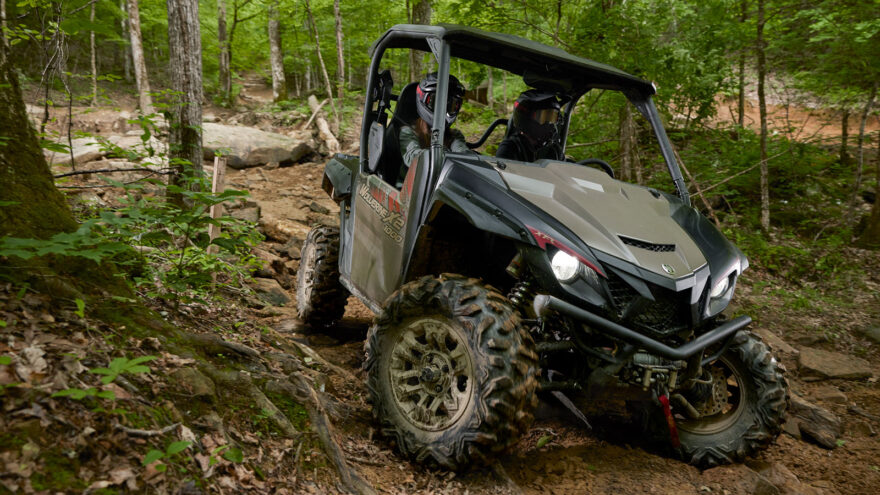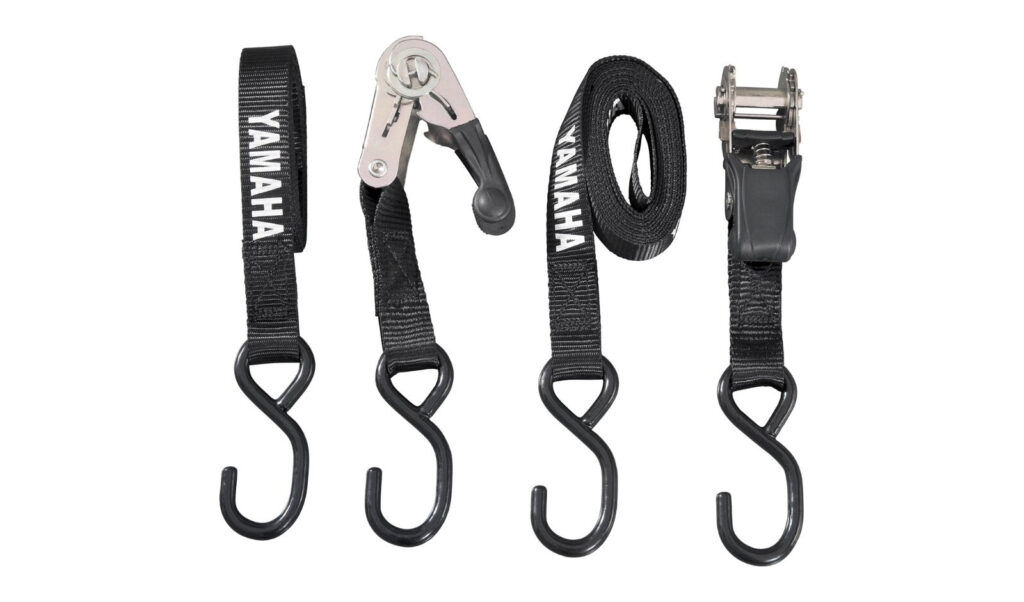
There are plenty of things that can set you back from enjoying a day of riding, but don’t let an improperly secured ATV or Side-by-Side vehicle (SxS) be one of them. In this article, we discuss the do’s and don’ts of machine transportation and the best equipment to get the job done.
Thank you to Yamaha for sponsoring this New Rider series.
Whether you’re transporting an ATV in the bed of a truck or tying down a SxS on a flatbed trailer, having the right equipment and knowing how to use it is imperative before you hit the road. That’s right, even when transporting an ATV in the bed of a truck, you’ll want to rely on more than just your tailgate to ensure your load isn’t going to go anywhere while you’re driving down the highway.
Get Strapped
First things first, let’s get down to the basics of what you need to safely transport your ATV or SxS. The most common and inexpensive tools you’ll need are a good set of tie-downs. Depending on how much you want to spend, there are plenty of options to choose from such as a cam-lock or ratchet style tie-down, and also the type and thickness of the strap that you use. Aside from the thickness, you can also get tie-down straps in different widths, but the most common for ATV transportation is a 1” width strap.
Like previously mentioned, you can score some great deals on 4-packs of straps from your local warehouse store or even discount tool store, but like the old saying goes: You get what you pay for. These straps are usually very thin and the cam-lock or ratchet mechanism are poorly made from very thin metals.
On the other end of the spectrum, you can get straps from companies like Mac’s Custom Tie-Downs that are made in the USA from top quality materials, and are available in the most popular styles. When you put some of these straps side-by-side, it’s easy to spot the difference between the budget tie-down packs and the high-quality ones.
Cam-Lock vs. Ratchet Tie-Downs

If you’re not familiar with the difference between a cam-lock tie-down and a ratchet tie-down, we’ll give you a crash course. The cam-lock style has two S-hooks, one being on the fixed end with the cam-lock and the other at the end of a longer nylon strap. The long strap is usually pre-fed through the cam-lock mechanism that has a knurled underside to provide bite into the strap to prevent slipping.
These are simple to use by attaching one S-hook to the frame of your ATV and the other end to an anchor point in the bed of your truck or the deck or railing of your trailer. Simply pull the strap tight, allowing the knurled portion of the cam-lock to secure the strap, and you’re good to go. Once at your destination, press down on the cam-lock and the straps instantly come loose as you pull them away. While these are quick and less expensive than a ratchet strap, you’ll never get the securing force that a ratchet strap has to offer.
A ratchet strap is constructed very similarly, with the exception being that the cam-lock is substituted for a ratchet mechanism that the webbing material is run through. Instead of using your weight while pulling the strap to make it tight, you simply use the ratchet mechanism to coil the excess material making the strap tight and secure. Once ready to unload, pull the release of the ratchet mechanism and pull to see the strap uncoil from around the ratchet barrel.
While the cam-lock style works best for youth and sport ATVs, we highly recommend using a ratchet style tie-down for heavier loads like a Utility ATV or SxS. This is because this style is less likely to come loose and is easier to apply more tension to the strap for transport.
Locking Down Your ATV or SxS
If you’re using either of these two tie-down styles, we recommend that you secure the S-hook at the fixed end of the strap to a solid location of your ATV. We recommend either the footpeg or a solid location on the frame as a mounting location where the other end should be at about a 45° angle out and down, and at each of the four corners. This minimizes side-to-side and front-to-back movement during transport. Just know that regardless of which strap you use, ALWAYS check strap tightness after 50 or so miles because the nylon webbing of the straps can stretch and cause slack.
On some ATVs and SxS models, finding a good place to secure an S-hook can really be a struggle. If this is the case with your vehicle, you can get soft straps or tie-down extenders that you can wrap around the frame rail of your ATV or SxS to make a safe mounting location without scratching your paint or powdercoat. Some tie-down kits already include them, but are also available for purchase on their own.
Tire Nets
Another tie-down option that we highly recommend for SxS transportation on a trailer is the use of tire nets. This is what you’ll see on car dollies that secure the front wheel of a car to the trailer. The difference being that when you’re using them on a SxS, you’ll have to add anchors to your trailer for the strap ends and we recommend using one at each corner of the SxS.
The reason we like these so much is because regardless of how bumpy the road you’re driving on is, you’ll have minimal chances of the strap on the tire nets becoming loose. This is because the suspension of the machine is still able to cycle while the tire/wheel is locked securely into place. We still highly recommend checking strap tension after your first 50 miles on the road.
 Your Privacy Choices
Your Privacy Choices
 The
The